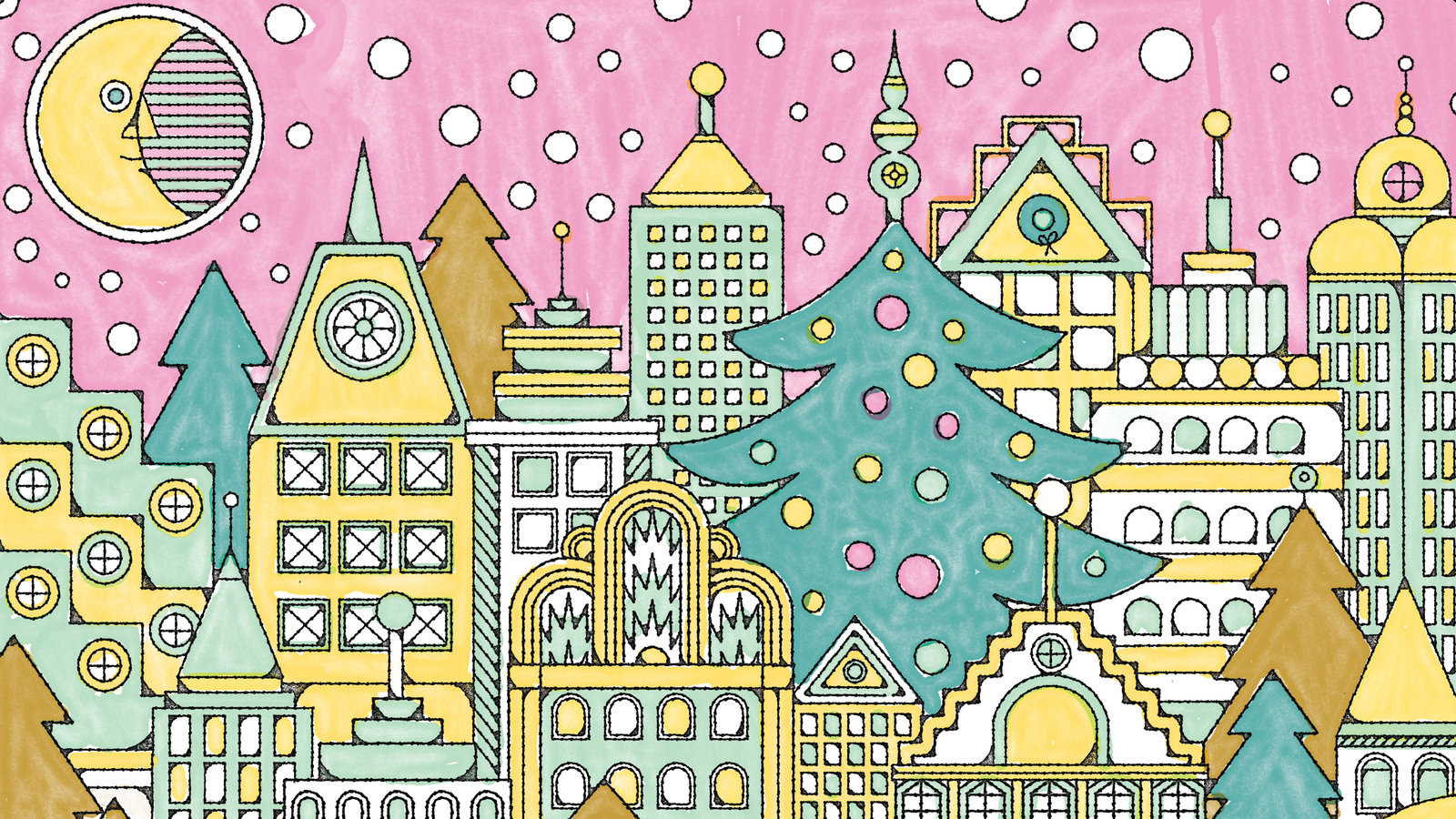Walking in New York this season, I stumble into a time warp. The smell of fir from sidewalk Christmas tree vendors plunges me into memories: sparkling red and silver lights on childhood holiday boughs, the judder of a saw in my hand as I built spruce bookshelves, and the songs of wrens and hermit thrushes along a forested trail in Canada. This portal into the past is opened by odor alone, by the fir needles perfuming whole city blocks.
No other sense is as direct as smell. No other sense is as ancient. Smell bypasses the neural processing centers that mediate all other senses. The aroma of fir trees flies me directly into specific wordless memories: childhood holidays, hand-sawn woodwork and my feet tramping through wet forests. When I breathe in, signals run along nerves wired straight to the parts of my brain governing emotional memory and associative learning. My conscious brain catches up later, adding a patina of language.
This inward journey into human remembrance is mirrored by an outward connection to the lives of trees and forests. The chemical conversation between cells and air- and waterborne aromatic molecules unites all living beings, from animal noses to plant root tips to the cell surfaces of bacteria. The scents of holiday trees evoke primal experience.
Other trees and their products join fir’s resinous spice in the seasonal bouquet. Roasting chestnuts loose sweet, earthy scents on street corners. Hanukkah olive oil perfumes the kitchen — sharp and green from early-season harvests, rounded gold from later pressings. The spiced wine of pomegranate mingles with the tannic nose-bite of olives and tree nuts on Persian Yalda tables marking the winter solstice. In the Southwest, piñon pine wood smoke is the winter incense of the desert mountains.
Midwinter tree aromas connect us not only to memory but also to the language of trees. Every tree lives in connection with thousands of other species — bacteria, fungi, insects, other plants — and aromas are the links that hold together this community. Plant leaves use odoriferous molecules to defend themselves from insects and fungi, to cope with heat stress, to listen to the health of other plants and to summon parasitic insects to devour leaf-eating pests. Fruits use aromatic oils and alcohols to deter the growth of bacteria and attract seed-dispersing frugivorous animals. The unique aroma of each plant species results from a blend of thousands of molecules, an olfactory manifestation of the diverse chemical ecologies of trees.
Soil and air are wrapped into these aromatic connections. A lively chemical chatter below ground allows plant roots, fungi and bacteria to trade food and information, exchanges essential for the vitality of trees and soil alike. When tree and soil aromas drift skyward, they act as water-gathering hubs, seeding raindrops. Forests, with help from oceans and grasslands, are the planet’s soil-builders and rainmakers.
All of these connections account for the richness of forests. For 400 million years, forests have been the primary centers of biological diversity on land, home today to 80 percent of terrestrial biodiversity. They are the great mediators of global cycles of water, carbon and oxygen. Human life would be impossible without forests. They give us breath and send clean water to rivers and fields. Forests have, since the origin of humanity, fed, warmed and sheltered us.
Yet, despite their importance to our well-being, we’re often disconnected from the lived, sensory experience of trees. Seasonal rituals let us heal this disconnection.
Trees need not be mere props in our winter celebrations. Instead, we can honor the ecological roots of traditions. Holiday firs bring the scents, hues and textures of the great boreal forest, storehouse of carbon and home to billions of migratory animals. The aroma of olive oil tells of the ancient reciprocity between people and olive trees, a bond that allowed Mediterranean cultures to thrive, even on arid land. Yule logs, roasted chestnuts and holiday fruits are reminders of our dependence on plants for food and fuel. All these traditions invite us to remember, enjoy and be thankful for the many connections that give us life.
This season, perhaps we could hear and answer the trees’ invitation: Inhale. Smell the needles, wood, oil and fruit. Then, expand the bounds of ritual and celebration to include the trees and the living Earth to which we belong. In these dark days, it is good to remember that we need one another.
David George Haskell (@dghaskell), a professor at the University of the South, is the author of “The Songs of Trees” and “The Forest Unseen.”
Source: Opinion | The Most Wonderful Smelling Time of the Year













